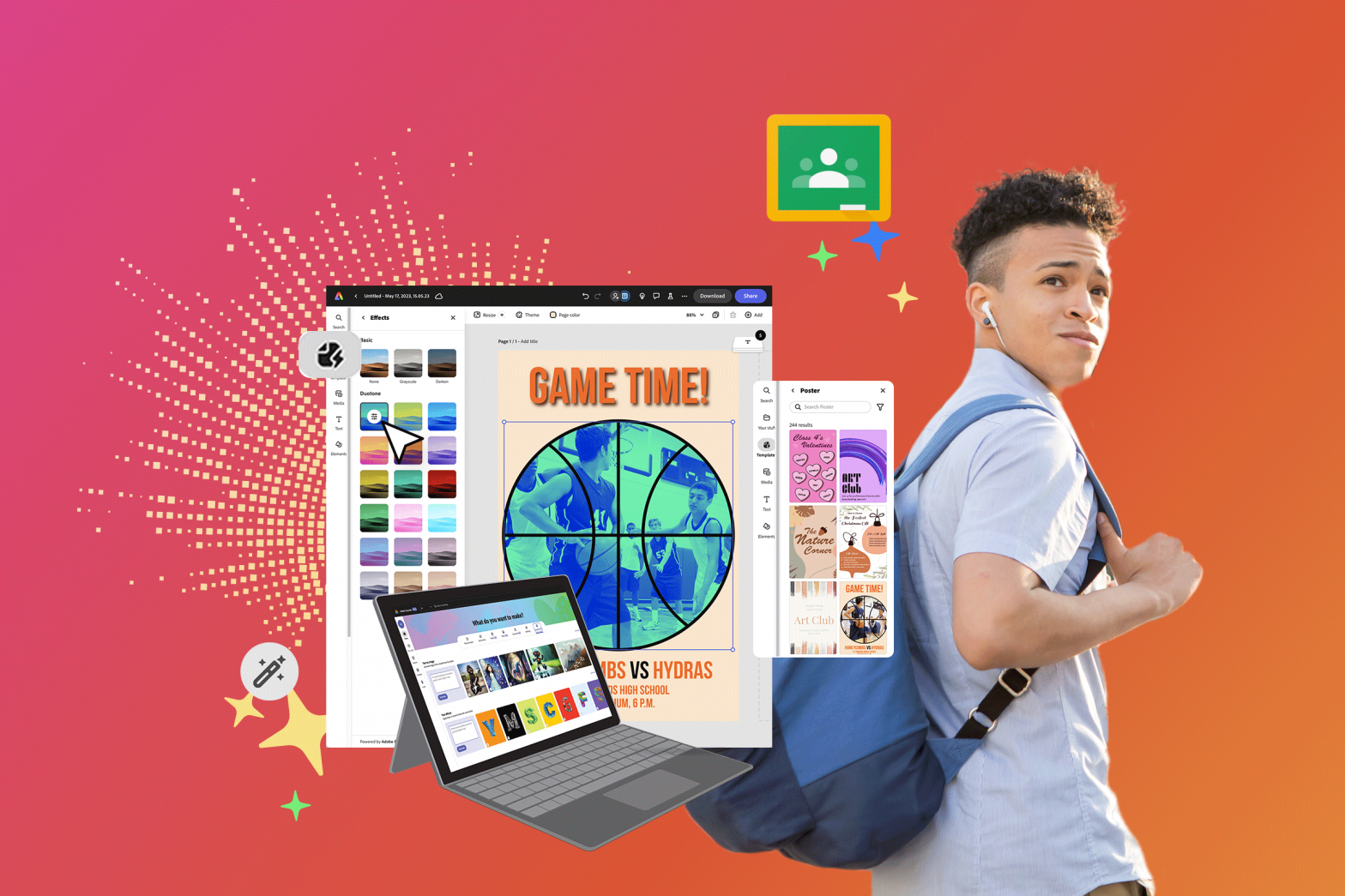/
The new integration will allow schools to pin the program to the ChromeOS shelf.
Share this story
:format(webp)/cdn.vox-cdn.com/uploads/chorus_asset/file/24742637/Adobe_Express_Google_blog_post_header_2400x1600.png)
Google has announced a new integration with Adobe that will allow schools to easily distribute the Adobe Express platform on student Chromebooks.
Adobe Express is a free, cloud-based design application that provides basic content creation tools for graphics, videos, and the like. Google hopes that students and teachers will use the software to incorporate more digital art into their assignments.
“I’ve got three children, and one of my favorite activities every year is the science fair in the gymnasium,” says John Maletis, Google’s VP of ChromeOS product, engineering, and UX. “I envision an Adobe Express-powered science fair where you’ve got more immersive ways of explaining the experiment or the project.”
Generally, licensing a third-party app across a fleet of student Chromebooks is a challenging multistep process requiring purchase orders, roster updates, and the like. “It requires a lot of perseverance,” said Govind Balakrishnan, Adobe’s senior vice president of Creative Cloud products and services, of that system.
As of today, Adobe Express is available directly in the Google Admin console. An IT administrator merely needs to toggle it on in order to give a school, grade, or class access. They can also elect to pin Adobe Express to their Chromebooks’ shelf (which is its equivalent of the Windows taskbar).
Teachers can also now assign, leave comments on, and grade Adobe Express projects within Google Classroom. Students can collaborate on Adobe Express projects, similarly to how they might in a shared Google Doc.
ChromeOS is well known and widely used in the education space, but its lack of compatibility with certain popular third-party software that Windows users can access has remained a hang-up for some potential customers. The former has picked up several new apps in the creative space recently, including LumaFusion back in February and the Google Photos editor in March. The prototyping platform Figma also recently became widely accessible on education Chromebooks both in and outside of the US. The push for better third-party support has extended beyond the artistic realm: Minecraft left the early access phase on ChromeOS a few weeks ago.
The Adobe Creative Cloud — the industry standard for content creation and a software suite generally assumed to be Windows and macOS territory — could help build the Chromebook’s case to teachers who want to assign creative projects. Handily for Adobe, a shelf icon could also drive students and instructors to use Express when they might otherwise have jumped to something else.
:format(webp)/cdn.vox-cdn.com/uploads/chorus_asset/file/24742670/Adobe_Express_Google_blog_post_multimedia_class_project_1100x732.png)
Balakrishnan, though, hopes that the integration will inspire teachers to incorporate new creative elements into their curricula.
He views the integration as “the first step in many that we hope to bring to market to make it significantly easier for teachers and students to blend creativity and productivity together,” he says. “For the longest time, we’ve viewed them as distinct pillars, and we’re increasingly seeing that there are opportunities to bring them closer together.”
“We’ve just seen this shift in the way teachers are educating their students — they’re constantly looking for more creative methods,” Maletis says.
The integration was part of a large slate of announcements that Google made at the ISTELive 23 Edtech conference in Philadelphia. The company also announced a number of other features for Google Classroom, including integration with its Read Along feature, sharable links to class templates, an expanded Google for Education App Hub, and more data controls and privacy toggles for Chromebooks.
